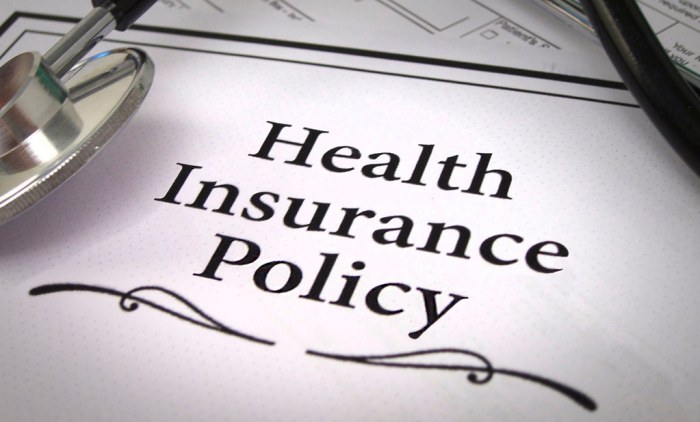Business Liability Insurance Understanding Its Importance
Business Liability Insurance is a crucial safeguard for enterprises, providing essential protection against unforeseen risks. In an ever-evolving landscape where businesses face numerous threats, having the right insurance can mean the difference between success and disaster. This type of insurance not only helps manage financial setbacks but also enhances a company’s credibility, making it an indispensable tool for small businesses.
As we explore the various aspects of Business Liability Insurance, we will define its purpose, Artikel the different types of coverage available, and highlight its significance in today’s competitive market. Understanding these elements is vital for any business owner looking to make informed decisions to protect their venture.
Overview of Business Liability Insurance
Business Liability Insurance is a type of insurance designed to protect businesses from claims resulting from injuries and damage to other people or property. Its primary purpose is to provide financial coverage for legal costs and settlements stemming from lawsuits or claims made against a business, ensuring that it can continue to operate without facing crippling financial losses due to unforeseen incidents.
This type of insurance is crucial for small businesses, which often have limited resources and may struggle to recover from significant legal expenses.The significance of Business Liability Insurance cannot be overstated, especially for small businesses. Many startups and small enterprises operate with tight budgets, making them particularly vulnerable to lawsuits. A single claim could potentially drain their financial reserves, jeopardizing their survival.
Having this insurance in place not only provides peace of mind but also fosters trust among clients and partners, as they know the business is covered in case of unexpected incidents.
Types of Coverage in Business Liability Insurance
Business Liability Insurance encompasses various types of coverage, each tailored to address specific risks. Understanding these different coverage options is essential for business owners to ensure they are adequately protected. The main types of coverage included in Business Liability Insurance are:
- General Liability Insurance: This is the foundational coverage that protects against claims of bodily injury, property damage, and personal injury, such as defamation or false advertising. It is essential for most businesses as it covers a wide range of liability issues.
- Product Liability Insurance: If a business sells products, this coverage protects against claims related to injuries or damages caused by those products. For example, if a defective product causes harm to a consumer, this insurance would cover the resulting claims.
- Professional Liability Insurance: Also known as errors and omissions insurance, this coverage is crucial for service-based businesses. It protects against claims of negligence, misrepresentation, or inadequate work. For instance, consultants and contractors may find this coverage essential if a client alleges that they failed to deliver promised services.
- Commercial Auto Insurance: For businesses that use vehicles for operations, this coverage protects against liability for injuries or damages caused by accidents involving those vehicles. It ensures that a business is financially protected if an employee causes an accident while driving a company vehicle.
- Cyber Liability Insurance: In today’s digital age, businesses face risks associated with data breaches and cyberattacks. This coverage helps cover costs related to data loss, legal fees, and notifications to affected clients in the event of a cyber incident.
Each type of coverage plays a vital role in safeguarding a business’s financial interests and reputation. By selecting the appropriate coverage options, business owners can effectively minimize risks and ensure their operations remain viable even in the face of unexpected challenges.
Types of Business Liability Insurance
Business liability insurance is a crucial part of protecting a company from unforeseen events that can lead to significant financial loss. Understanding the various types of business liability insurance available helps business owners choose the right coverage to safeguard their interests. Each type of policy is designed to address different risks associated with business operations.
General Liability Insurance
General Liability Insurance is fundamental for any business, providing coverage against various claims such as bodily injury, property damage, and personal injury. It is essential for businesses that interact with the public or have a physical presence, as it helps protect against lawsuits and claims that could arise from day-to-day operations.
Professional Liability Insurance
Professional Liability Insurance, also known as Errors and Omissions Insurance, covers businesses against claims of negligence, malpractice, or inadequate work. This type of insurance is particularly important for service-oriented professions, such as consultants, lawyers, and medical professionals, as it protects them against claims stemming from their professional services.
Product Liability Insurance
Product Liability Insurance offers protection to businesses that manufacture or sell products. It covers claims arising from injuries or damages caused by faulty or defective products. This insurance is critical for businesses involved in the production and distribution of physical goods, as it safeguards against legal action stemming from product-related issues.
When to Consider Each Type of Insurance, Business Liability Insurance
Understanding when to consider each type of insurance is key to effective risk management.
- General Liability Insurance: Businesses should consider this insurance as soon as they start operations, especially if they have a physical location or interact with clients and customers directly.
- Professional Liability Insurance: This type of insurance becomes essential for service-based businesses where professional opinions or advice are provided, particularly when the potential for legal claims is higher.
- Product Liability Insurance: Businesses involved in the production, distribution, or sale of products should secure this coverage to protect against claims that may arise from product defects or safety issues.
Key Benefits of Business Liability Insurance

Source: pxhere.com
Business liability insurance offers crucial protection for companies, shielding them from potential financial losses that may arise from claims made by clients, customers, or other third parties. This type of insurance is vital for maintaining operations and ensuring long-term viability amidst unforeseen circumstances.One of the primary advantages of business liability insurance is the financial protection it provides. In the event of a lawsuit or claim against the business, this insurance can cover legal fees, settlements, and other related expenses.
Without such coverage, a single claim could drain a business’s financial resources, possibly leading to bankruptcy. By having business liability insurance, companies can allocate their funds toward growth rather than legal battles, creating a safety net that enhances their stability and peace of mind.
Financial Protection Offered by Business Liability Insurance
The financial implications of business liability claims can be significant. This insurance protects against various risks that may lead to costly lawsuits. Here are some scenarios where financial protection is essential:
- Injury Claims: If a customer is injured on a company’s premises, business liability insurance can cover the medical costs and legal fees associated with the claim.
- Property Damage: If a business’s operations inadvertently cause damage to a third party’s property, the insurance can help cover repair costs, preventing financial strain on the business.
- Advertising Injury: Claims related to copyright infringement or defamation can arise from marketing activities. This insurance can mitigate the financial impact of such claims, ensuring the business can continue its marketing efforts without fear of repercussions.
Enhancement of Company Credibility
Having business liability insurance not only provides financial coverage but also significantly enhances a company’s credibility. Clients and customers often view businesses with insurance as more trustworthy and professional. This perception can lead to stronger relationships and increased business opportunities. For instance, a client may be more willing to engage with a contractor who has liability insurance, knowing that they are protected in case of accidents or mistakes.
Moreover, some contracts or agreements may require proof of liability insurance, making it essential for businesses to secure this coverage to compete effectively in their industry.
Risk Mitigation through Business Liability Insurance
Business liability insurance serves as a crucial tool for risk management. By mitigating potential risks, companies can focus on their core operations with a sense of security. Here are several ways it helps:
- Peace of Mind: Knowing that they are protected against claims allows business owners to focus on growth and innovation rather than worrying about potential lawsuits.
- Reputation Protection: Resolving claims swiftly through insurance can help maintain a business’s reputation by addressing issues before they escalate further.
- Long-term Sustainability: By protecting themselves from significant financial losses, businesses can ensure their long-term sustainability and ability to invest in future initiatives.
“Business liability insurance is not just a safety net; it’s a cornerstone of responsible business management.”
How to Choose the Right Business Liability Insurance

Source: nitrocdn.com
Selecting the appropriate business liability insurance is crucial for safeguarding your enterprise from unforeseen liabilities and claims. Understanding the specific needs of your business and evaluating potential insurance options can help you make an informed decision that aligns with your company’s risk profile.When choosing business liability insurance, several factors come into play. It’s important to consider the unique characteristics of your business, such as the industry you’re in, the size of your operation, and the potential risks associated with your services or products.
Additionally, evaluating your business’s financial situation and growth plans can significantly influence the type of coverage you need.
Factors to Consider When Selecting Business Liability Insurance
Understanding the factors that influence your choice of insurance is essential. The following points are important considerations when selecting your policy:
- Type of Business: Different industries have different liabilities. For example, a construction company may face higher risks compared to a tech startup.
- Coverage Limits: Determine the maximum amount your policy will pay for claims. Make sure it is adequate for your business needs.
- Exclusions: Review what is not covered by the policy. Understanding exclusions helps prevent surprises during a claim.
- Cost of Premiums: Assess your budget for insurance. While it’s tempting to choose the cheapest option, ensure it provides adequate coverage.
- Claims Process: Look for providers with a straightforward and efficient claims process. A complicated claims procedure can delay much-needed support.
Steps to Assess a Business’s Specific Liability Needs
Assessing your business’s specific liability needs involves several steps. This process ensures that you have the right coverage tailored to your operations and risks.
- Analyze Industry Risks: Research common liabilities in your industry. For instance, in retail, you may face slip-and-fall claims.
- Evaluate Business Operations: Identify all activities and services that could expose your business to risks. This includes interactions with customers, suppliers, and the public.
- Consult with Professionals: Engage with legal experts or insurance brokers who can provide insights based on your specific business needs.
- Review Contractual Obligations: Assess any contracts you have with clients or partners that may require specific insurance coverage.
- Estimate Financial Exposure: Calculate the potential financial impact of liability claims on your business to understand how much coverage you need.
Checklist for Comparing Different Insurance Providers
When comparing different insurance providers, having a checklist will help streamline your evaluation process. This list can be utilized to ensure that you consider all relevant aspects of each provider’s offerings.
- Provider Reputation: Research customer reviews and ratings to gauge the provider’s standing in the market.
- Policy Options: Check if they offer a variety of policies that cater to your specific needs.
- Customer Service: Evaluate the level of customer support available, including accessibility and responsiveness.
- Financial Stability: Investigate the financial health of the provider to ensure they can fulfill claims.
- Discounts and Bundles: Inquire about any available discounts for bundling policies or for risk management efforts.
Common Exclusions in Business Liability Insurance
Understanding the intricacies of business liability insurance goes beyond recognizing its benefits and types; it’s crucial for business owners to also be aware of the exclusions that may apply to their policies. Exclusions are specific situations or conditions under which the insurer is not liable for claims, which can significantly impact a business during unexpected events. Being informed about these exclusions helps in making better decisions regarding risk management and coverage needs.
Typical Exclusions in Business Liability Insurance
Business liability insurance policies often contain a variety of exclusions that can limit coverage. Recognizing these exclusions is vital for business owners to ensure they are adequately protected against potential risks. Below are some common exclusions typically found in these policies:
- Intentional Acts: Any damage or injury caused by intentional wrongdoing or illegal activities by the insured or their employees is usually excluded from coverage.
- Professional Errors: Claims related to professional negligence, errors, or omissions are generally not covered under standard liability insurance but may require a separate professional liability policy.
- Contractual Liabilities: Obligations assumed under a contract that exceed standard liability are often excluded unless specifically endorsed in the policy.
- Employment-Related Practices: Claims arising from employment practices, such as wrongful termination or discrimination, are typically excluded and may need separate coverage.
- Pollution Liability: Damage resulting from environmental contamination or pollution may not be covered, as this often requires specialized insurance.
The absence of coverage for these situations can leave businesses vulnerable to significant financial losses resulting from lawsuits or claims. Therefore, it is essential for business owners to review their policies carefully and consider obtaining additional coverage when necessary.
Examples of Situations Not Covered by Business Liability Insurance
Specific scenarios may arise where standard business liability insurance provides no protection, potentially leading to severe repercussions for the business. Here are some illustrative examples:
- Slips and Falls on Property: If a visitor slips and falls due to an obvious hazard that was not addressed, the claim may be denied if the insurer deems that the business failed to maintain a safe environment.
- Product Liability for Defective Products: If a product manufactured by the business causes injury to a consumer, and it is determined that the defect was known prior to sale, coverage may be excluded.
- Cybersecurity Breaches: Incidents involving data breaches or cyberattacks typically fall outside of general liability coverage, necessitating additional cyber liability insurance.
- Employment Lawsuits: If an employee files a lawsuit for harassment or discrimination, these claims would typically not be covered under general liability insurance.
- Damages from Premises Liability: If a business is found liable for damages that occur on its premises due to negligence but did not have adequate safety measures in place, claims may not be covered.
Recognizing these exclusions helps businesses formulate strategies to mitigate risks and actively pursue the necessary supplemental insurance solutions to fill any gaps in their coverage. This proactive approach enables business owners to safeguard their assets and minimize potential liabilities effectively.
The Role of Business Liability Insurance in Risk Management
Business liability insurance is a critical component of an organization’s risk management strategy, serving as a financial safety net against potential claims that could arise from various business operations. By protecting against claims of negligence, bodily injury, and property damage, this insurance helps businesses navigate uncertainties and maintain stability in their operations. Understanding its role within a broader risk management framework is essential for any organization that seeks to mitigate risks effectively.Integrating business liability insurance into an overall business plan involves a few strategic approaches.
Firstly, businesses should conduct a thorough risk assessment to identify potential liabilities specific to their industry and operations. This process helps in tailoring the insurance coverage to fit unique business needs. Additionally, organizations can adopt the following methods to ensure a comprehensive integration of insurance into their risk management strategy:
Methods for Integrating Insurance into Overall Business Planning
A cohesive approach to risk management encompasses several actions that can effectively weave insurance into the fabric of business planning. These methods include:
- Risk Assessment and Analysis: Conduct detailed evaluations to identify potential liabilities and assess the likelihood and impact of risks.
- Policy Customization: Work with insurance professionals to develop tailored policies that address specific risks and operational nuances.
- Employee Training: Implement training programs that educate employees on risk management practices and the significance of adhering to safety protocols.
- Business Continuity Planning: Develop a plan that Artikels how the business will continue operating during and after a crisis, incorporating insurance as a financial safeguard.
- Stakeholder Communication: Keep lines of communication open with stakeholders about risk management strategies and insurance coverage to foster transparency.
Regularly reviewing insurance coverage is another essential aspect of risk management. As businesses evolve, their risk profiles change, and so should their insurance policies. A proactive approach to reviewing and updating coverage ensures that businesses remain adequately protected against new risks or changes in the scope of their operations. This process can include:
Importance of Regular Reviews of Insurance Coverage
Conducting regular insurance reviews can significantly enhance a company’s risk management strategy. It allows businesses to:
- Identify Gaps in Coverage: By reviewing policies regularly, businesses can detect any coverage gaps that may have developed due to changes in operations or legal requirements.
- Adjust Coverage Limits: Adjusting policy limits based on current asset values and business activities ensures adequate protection against potential liabilities.
- Incorporate New Risks: Emerging trends and risks, such as cyber threats or environmental liabilities, may necessitate updates in coverage to remain protected.
- Reassess Premiums: Regular reviews can help businesses evaluate the cost-effectiveness of their current policies and negotiate better terms or find more suitable options.
In summary, business liability insurance plays a key role in a company’s risk management strategy by providing necessary protection against unforeseen liabilities. By integrating insurance into overall business planning and committing to regular policy reviews, organizations can enhance their resilience and secure their financial future.
Claims Process for Business Liability Insurance

Source: zeelandnet.nl
Filing a claim under a Business Liability Insurance policy is a critical process that requires careful attention to detail. Understanding the steps involved can help streamline the process and ensure that your business receives the support it needs in a timely manner. This section Artikels the necessary steps for filing a claim, the required documentation, and provides a timeline for the claims process from initiation to resolution.
Steps to File a Claim
When a business needs to file a claim, it is essential to follow specific steps to ensure that the claim is processed smoothly. Below are the typical steps involved in this process:
- Notify Your Insurance Provider: Promptly inform your insurance company about the incident that may lead to a claim. Depending on the policy, this can usually be done via phone or through an online claims portal.
- Complete a Claim Form: Fill out the required claim form provided by your insurer. This form will require details about the incident, including date, time, location, and a description of the events.
- Gather Supporting Documentation: Collect all relevant documents that support your claim, such as invoices, receipts, witness statements, and photographs of the incident.
- Submit the Claim: Send the completed claim form along with the gathered documentation to your insurer. Ensure that you keep copies for your records.
- Follow Up: After submitting your claim, regularly check in with your insurer to track the status of your claim and provide any additional information if requested.
Documentation Needed for a Successful Claim
Providing the right documentation is crucial for a successful claim under a Business Liability Insurance policy. The following documents are typically required:
“Thorough documentation not only helps in expediting the claims process but also strengthens the validity of your claim.”
The essential documentation includes:
- Claim Form: Completed and detailed claim form.
- Incident Reports: Any reports made by law enforcement or other authorities related to the incident.
- Financial Records: Invoices, receipts, and financial statements that can substantiate losses incurred.
- Medical Reports: If applicable, any medical reports or bills related to injuries caused by the incident.
- Photographic Evidence: Photos of the incident scene, damages, and any other relevant visuals.
Timeline for the Claims Process
Understanding the timeline for the claims process can help set expectations for resolution. Below is a general Artikel of the timeframe from filing to resolution:
| Phase | Typical Duration |
|---|---|
| Claim Filing | 1-3 Days |
| Initial Review by Insurer | 5-10 Days |
| Investigation Period | 1-4 Weeks |
| Claim Decision Notification | 2-5 Days After Investigation |
| Claim Payment Processing | 1-2 Weeks After Approval |
Each claim’s specific duration can vary based on several factors, including the complexity of the case and the responsiveness of both the business and the insurer. Understanding this timeline can help businesses manage their expectations and prepare for the financial implications associated with the incident.
Cost Factors of Business Liability Insurance
Understanding the cost factors associated with business liability insurance is crucial for business owners looking to protect their assets. The premiums for this type of insurance can vary significantly based on a multitude of factors that reflect the unique risks of each business. By recognizing these cost determinants, businesses can make informed decisions and potentially save on insurance expenses while ensuring adequate coverage.Several key factors influence the cost of business liability insurance.
These include the nature of the business, the coverage limits chosen, the claims history, and the geographical location. Additionally, the size of the business and the number of employees also play a role in premium calculations. Insurers assess these elements to determine the overall risk profile of the business, which directly affects the premium amount.
Factors Influencing Premium Calculation
When determining the cost of business liability insurance, insurers consider a variety of criteria that contribute to the overall risk. Below are some of the primary factors that influence how premiums are calculated:
- Industry Type: Different industries have varying levels of risk exposure. For example, a construction company faces higher liability risks compared to a consulting firm, leading to higher premiums for the former.
- Business Size: Larger businesses typically pay higher premiums due to their increased risk of claims and the larger number of employees involved.
- Location: Businesses operating in urban areas or regions with higher crime rates may incur higher premiums compared to those in rural areas.
- Coverage Amount: The higher the coverage limit, the more expensive the premium. Businesses need to balance the level of coverage they desire with their budget.
- Claims History: A business with a history of frequent claims may face increased premiums as insurers view it as a higher risk.
Industry-Specific Insurance Costs
The insurance costs can differ dramatically between industries due to varying risk factors. For example, businesses in the healthcare sector, such as hospitals and clinics, not only face higher liability risks due to the nature of their work but also often require more specialized coverage. In contrast, a small retail store might have lower liability exposure and thus enjoy comparatively lower premiums.Consider the following examples that illustrate how different industries may experience varying insurance costs:
- Construction Industry: Given the high-risk nature of construction work, companies in this sector might see annual premiums ranging from $10,000 to $30,000 or more, depending on the scale of operations.
- Technology Firms: These businesses might incur lower premiums, typically in the range of $1,000 to $5,000 annually, as the risks associated with software development and IT services are generally less severe.
- Hospitality Sector: Restaurants and hotels can expect premiums around $3,000 to $15,000, influenced by factors such as customer interactions and on-site alcohol service.
“Understanding the cost factors of business liability insurance can empower business owners to choose the right coverage while managing their expenses effectively.”
Summary
In conclusion, Business Liability Insurance serves as a foundational element of risk management for any business. By selecting the appropriate coverage and understanding the nuances of various policies, business owners can not only protect their bottom line but also foster trust with their clients. Regularly reviewing insurance options and adapting to changing business needs can further enhance the protective measures in place, ensuring longevity and success.
Answers to Common Questions
What is Business Liability Insurance?
Business Liability Insurance protects businesses from claims resulting from injuries and damage to people or property.
Who needs Business Liability Insurance?
Generally, any business, especially those with public interaction or product sales, should consider this insurance.
How much coverage do I need?
The amount of coverage needed varies by business type and size, but assessing potential risks is key to determining the right level.
Does Business Liability Insurance cover employee injuries?
No, employee injuries are typically covered by Workers’ Compensation Insurance, not Business Liability Insurance.
Can I get Business Liability Insurance if I’m self-employed?
Yes, self-employed individuals can and should obtain Business Liability Insurance to protect themselves and their clients.





